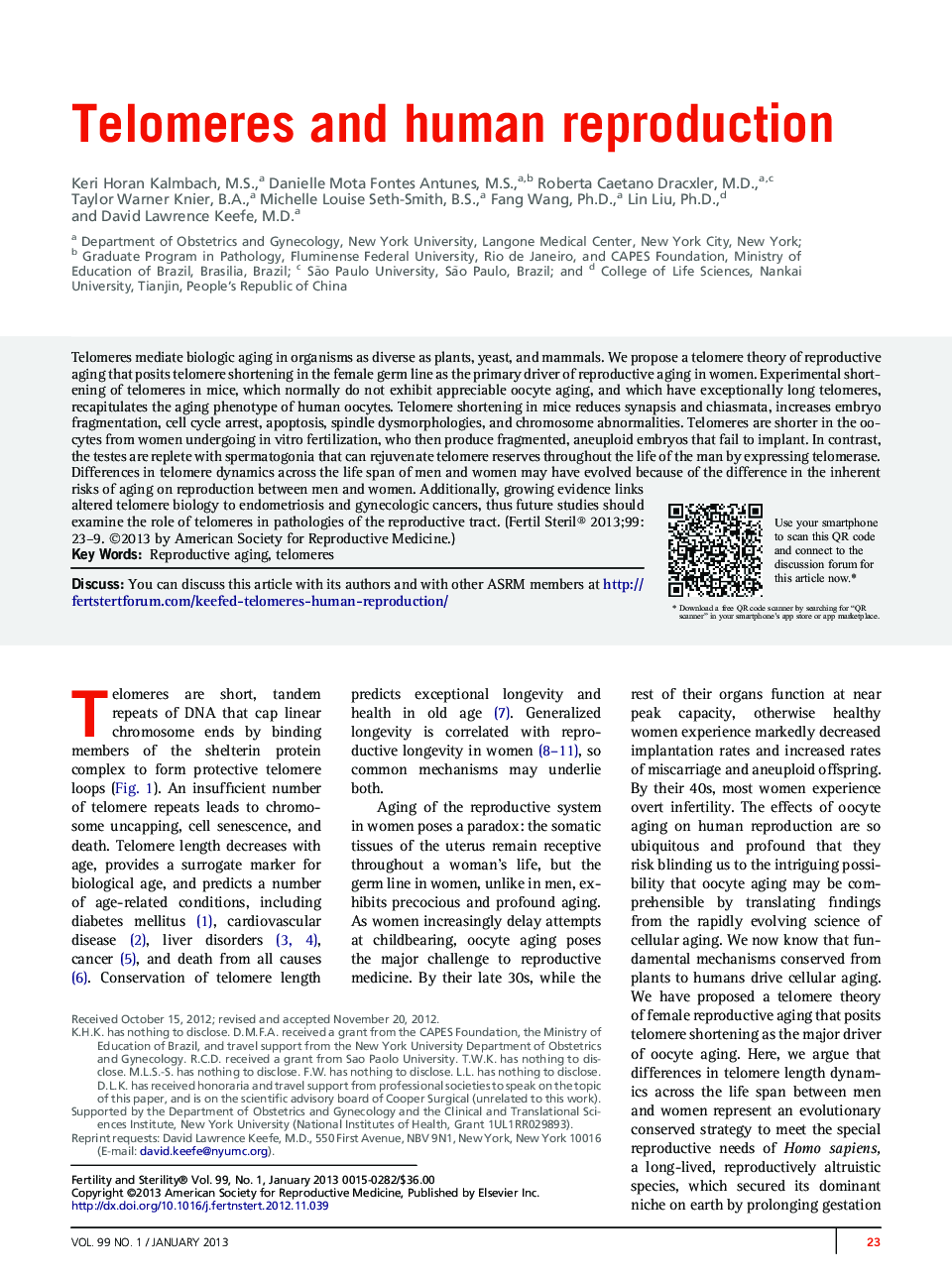| Article ID | Journal | Published Year | Pages | File Type |
|---|---|---|---|---|
| 6179232 | Fertility and Sterility | 2013 | 7 Pages |
Abstract
Telomeres mediate biologic aging in organisms as diverse as plants, yeast, and mammals. We propose a telomere theory of reproductive aging that posits telomere shortening in the female germ line as the primary driver of reproductive aging in women. Experimental shortening of telomeres in mice, which normally do not exhibit appreciable oocyte aging, and which have exceptionally long telomeres, recapitulates the aging phenotype of human oocytes. Telomere shortening in mice reduces synapsis and chiasmata, increases embryo fragmentation, cell cycle arrest, apoptosis, spindle dysmorphologies, and chromosome abnormalities. Telomeres are shorter in the oocytes from women undergoing in vitro fertilization, who then produce fragmented, aneuploid embryos that fail to implant. In contrast, the testes are replete with spermatogonia that can rejuvenate telomere reserves throughout the life of the man by expressing telomerase. Differences in telomere dynamics across the life span of men and women may have evolved because of the difference in the inherent risks of aging on reproduction between men and women. Additionally, growing evidence links altered telomere biology to endometriosis and gynecologic cancers, thus future studies should examine the role of telomeres in pathologies of the reproductive tract.
Keywords
Related Topics
Health Sciences
Medicine and Dentistry
Obstetrics, Gynecology and Women's Health
Authors
Keri Horan M.S., Danielle Mota M.S., Roberta Caetano M.D., Taylor Warner B.A., Michelle Louise B.S., Fang Ph.D., Lin Ph.D., David Lawrence M.D.,
